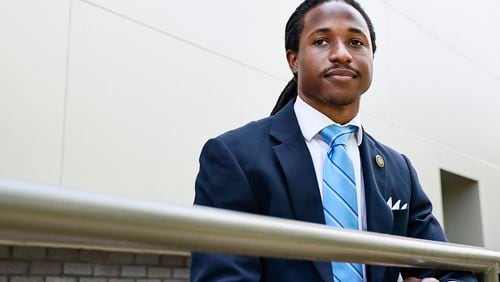A national organization representing the nation’s 150 medical schools has released guidelines to address racism and bias and encourage diversity at all stages of a physician’s education.
The Association of American Medical Colleges (AAMC) issued the document earlier this month, based on input from medical students, educators and others across the nation. It comes after the share of non-white applicants to medical school last year rose slightly above 50% for the first time.
The effort lays out a series of competencies, or outcomes, that students entering residency, graduates and faculty should each have in order to increase diversity, equity and inclusion in healthcare. The goal is not only to recruit and retain more students and faculty of color, but also to address the sort of health inequities for patients of color that were exposed during the pandemic.
Examples include: faculty teaching how to promote and sustain diversity in health care, and students reflecting on “how one’s own identities, power, and privileges ... influence interactions with patients, families, communities, and members of the health care team.”
The AAMC referred to “broad societal calls for social justice and the disparate impacts of the COVID-19 pandemic” as adding urgency to the effort.
Reactions at the two metro Atlanta medical schools and the state’s public medical college ranged from welcoming celebration to a degree of interest amounting to a “glance.”
Dr. Uché Blackstock, a former medical school faculty member and founder of a health equity consulting firm, praised the document’s comprehensiveness while also asking, “Why did it take a pandemic and George Floyd’s murder to get this effort?”
At the Emory School of Medicine, Dr. Sheryl Heron, professor of emergency medicine and associate dean for community engagement, equity and inclusion, said she “couldn’t be more thrilled” by the project. “This work is absolutely imperative when you look at the diversity of this country,” she said. Until now, “every medical school has been reporting diversity numbers — this takes it to the next level,” she said, adding that her school has launched an effort to address “implicit bias” and “anti-racism,” among other issues.
Jamil Joyner, who is scheduled to graduate from the Morehouse School of Medicine next year, said the document is “very familiar,” as it echoes his education at the historically-black school. He recalled a first-year class in which a professor showed slides of lupus disease symptoms in white patients. “This is what you’re seeing in textbooks,” said the professor. Then he showed slides from his own Black patients. “This is what you’re seeing at Grady,” he said. “It was completely different!” Joyner exclaimed.
Joyner pointed out that his education — and the AAMC document — don’t only focus on race, but on the broad range of identities among patients, as well as socioeconomic conditions, all of which affect health outcomes. Even during his short career, the 27-year-old said patients have told him, “You’re the first physician who has gotten this right,” whether “this” was calling a transgender patient by their chosen name, or paying attention to the cost of a medication.
At the Medical College of Georgia at Augusta University, Dr. David Hess, dean of the state’s public medical school, said he had “glanced” at the AAMC document. “We’ve always had an emphasis here on diversity,” he said, describing a series of initiatives to recruit “underrepresented minorities” among students and faculty.
The dean said he had recently met with a student chapter of the National Medical Association, a national nonprofit organization representing Black physicians and patients. The purpose was to hear their concerns about cases taught at the school, “making sure they’re not stereotyped,” said Dr. Hess. An example: a case involving “a patient with HIV who used drugs and had braids.”
The dean said his school had recently overhauled its curriculum as part of an initiative to shorten the time it takes to graduate, and wanted to “make sure we’re being sensitive.” Asked about the specific concepts outlined in the AAMC guidelines, including the idea of “privilege,” he said, “I’d rather not tell everyone who’s white ‘You have white privilege.’ Everyone has things they have to work on and you have to be careful how you do this.”
“We would have to study this with the curriculum committee and the diversity, equity and inclusion deans,” he concluded.
As emergency medicine program director at Northeast Georgia Medical Center, Dr. Josh Mugele oversees resident physicians, who are doctors still in training. “With the George Floyd protests and the differences in outcomes in the pandemic, the house of medicine is slowly moving, and we’re realizing we’re part of the problem,” Dr. Mugele said. He added that he hoped the document would make people think about racism and bias, but allowed that “it would be easy to treat in a cursory manner, and to do the minimum amount of work.”
Similarly, Dr. Blackstock noted that “medical schools are not obligated to follow these guidelines.”
At the AAMC, Kamilah Weems, director of strategic initiatives and partnerships, said the guidelines were “not intended to be mandated. We support individual medical schools to develop curricula according to the populations they serve ... (and) will learn over the coming years how they are integrated and the impact they have.”
Future students will likely play a part in that, said Joyner. “We’re getting to a generation who have seen a broader conversation about race,” he said. “There’s a growing desire with the medical student population to be involved in institutions effecting change.”
The Atlanta Journal-Constitution and Report for America are partnering to add more journalists to cover topics important to our community. Please help us fund this important work at ajc.com/give







